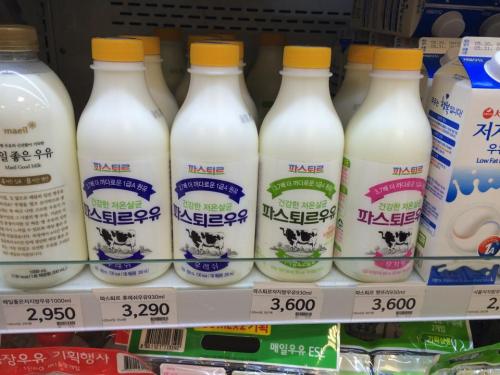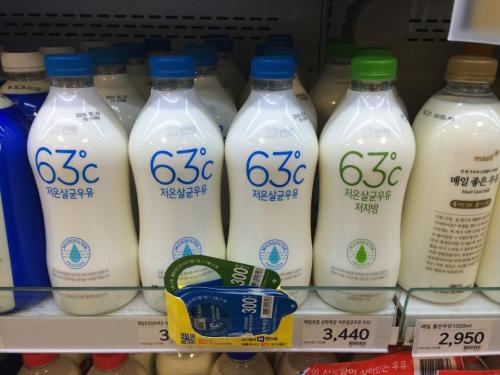


Do you ever wonder why milk tastes different in Korea? It has to do with the pasteurization method. North America uses the HTST method (high temperature, short time), while Korea has, for the most part, used the UHT method (ultra high temperature).
HTST kills spoilage microorganisms, and consists of heating the milk to 74°C for 10-20 seconds. With correct cooling, and chilled distribution, it has a shelf life of 1-2 weeks.
UHT kills microorganisms AND spores in milk, giving it a shelf life of 6-9 months (until opened) without refrigeration or preservatives. UHT consists of heating the milk to 138° C for 2-3 seconds.
For regular style HTST milk, you have two choices in Korea: 상하목장(Sangha Farms) or 파스퇴르 (Pasteur). Pasteur has a more typical taste, while Sangha Farms uses Batch Pasteurization which consists of an even lower temperature of 63° C for 30 minutes as well as a micro-filter process that I believe gives it a “tinny” taste.
If you can read Hangul, you’ll also be able to choose the fat content, but beware: there are no industry standards of what is considered “low-fat.”
Good to know:
Pasteur (파스퇴르) brand:
후레쉬 (Fresh): 2% (blue)
저지방 (low fat): 1% (green)
무지방 (no fat): 0% (pink)
Sangha Farms (상하목장):
Standard (no specification): Whole milk (blue)
저지방 (low fat): 2% (green)
지방 = fat
저 = low
무 = none
저지방 = low fat
무지방 = no fat
(Information from Joe Zellers. Feel free to share this information, just as long as he is credited.)
About the girl
Thank you so much for visiting and reading.
Tumblr, Twitter, Instagram, Lastfm, Flickr, and Facebook, Ask me anything

















